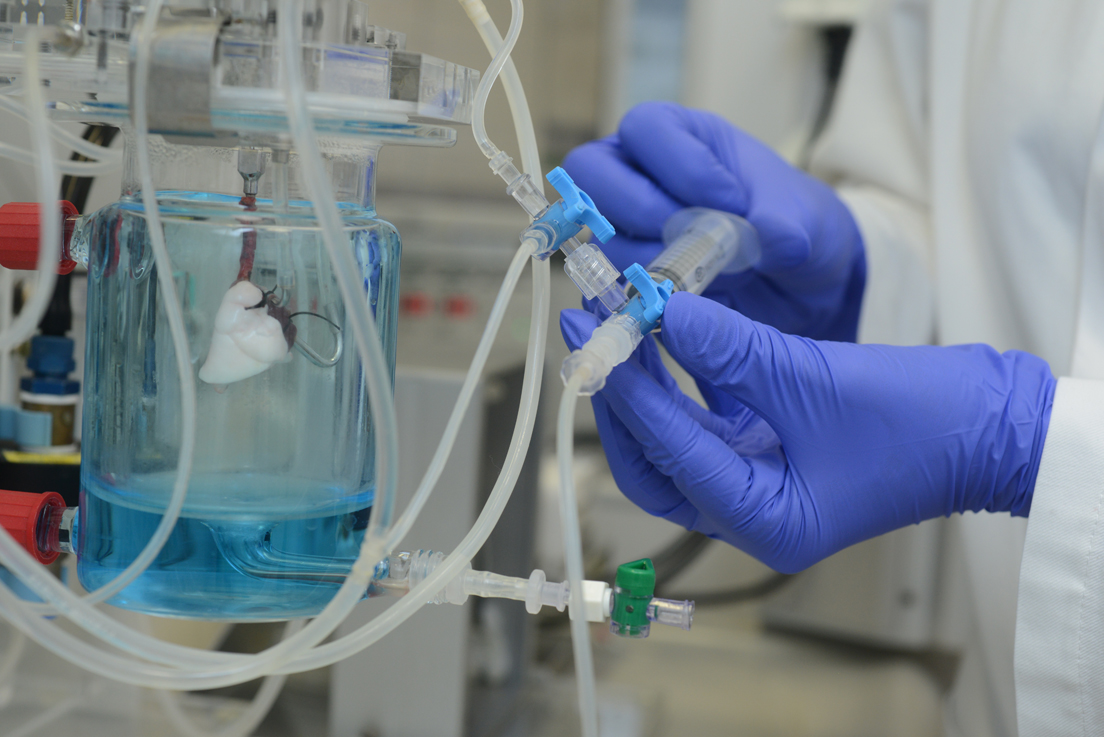Investigating aerosol droplet absorption in an ex-vivo model

Most diseases are treated systemically. In many cases, the affected organs are easily accessible via this route. The lung offers the possibility of direct treatment via the respiratory tract. For relevant substances this enables enhanced efficacy, robustness and effectiveness.
On the other hand, the administration of drugs via the respiratory tract also leads to (undesired) systemic absorption of the substance. To study the transition of a nebulized or aerosolized substance depending on droplet size, Fraunhofer ITEM researchers use the ex-vivo model of the isolated perfused rat lung (IPL). In this alternative model, they studied the transition of a fluorescence-labeled substance into the perfusate, which served as blood substitute in this model. Two different methods were used to generate aerosols with different droplet sizes. The kinetics showed an increase in fluorescence in the perfusate over the duration of the experiment. The absorption of fluorescent substance from larger droplets into the perfusate was higher than from the finer aerosol, and the uptake of small molecules was faster than that of large molecules.
The IPL, therefore, represents a promising model – in the spirit of the 3Rs (replace, reduce, refine animal testing) – for the investigation of airborne substances, their deposition in the lungs and their transition into the bloodstream.
 Fraunhofer Institute for Toxicology and Experimental Medicine
Fraunhofer Institute for Toxicology and Experimental Medicine